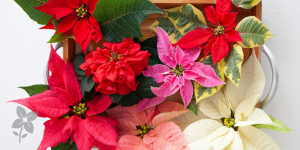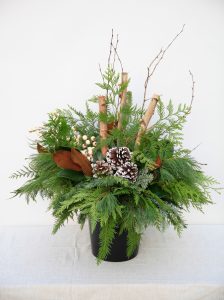
Floriography: A Tiny Treatise Pertaining to the Secret Language of Flowers
by Rob Sproule
In our world of chat, text, emojis, likes, and an all-around uninhibited ability to communicate, it’s hard to imagine a time when just talking to someone of the opposite sex required meeting strict etiquette criteria and swimming upstream through a cultural system that made communication very difficult.
In Victorian England, love found a way. Motivated by Queen Victoria’s public fascination for flowers, people endowed flowers with very specific meanings and used them like hieroglyphs to commutate under their chaperones’ watchful eyes. Dozens of flower dictionaries were published under Victoria’s reign, and the vocabulary burgeoned from flirtation to encompass the entire range of human emotion.
Tussie-Mussies, or nosegays, developed into the text messages of the Victorian world. In their simplest form, ‘talking bouquets’ comprised a single flower (the central meaning) surrounded by tightly arranged, fragrant herbs. Typically wrapped in a doily and bound by ribbon, women could pin them to their chests or carry them.
Every aspect of a talking-bouquet was symbolically infused. The central flower, not surprisingly, formed the central message. Herbs, foliage and flowers were only added around it if their meanings supplemented the central message. Not all messages, as you’ll see below, were flirtatious, so one had to be careful which flowers they chose. The way a woman held it denoted the degree of her acceptance of the message.
Flower Meanings
We all know that red roses decry passionate love, but what about the lesser-known meanings? Hundreds of flowers become emblematic of affection, regret, longing, planning, and sometimes even scorn. Skipping the obvious ones, here are a few of my lesser-known favourites:
Apple Blossom: good fortune is coming
Bachelor Button: celibacy
Basil: hatred
Camellia (red): You’re a flame in my heart
Carnation (striped): I’m sorry but I can’t be with you.
Chickweed: I cling to thee
Chicory: Frugality
Cyclamen: resignation and goodbye
Dianthus: make haste
Geranium: true friendship
Grass: submission
Heliotrope: I’m devoted to you
Hyacinth (purple): I’m sorry, please forgive me
Lady Slipper: I’m a capricious heart and it’s up to you to win me
Lily of the Valley: Sweet innocence
Monkshood: Beware because danger is near you
Nasturtium: Victory in battle, glory
Nuts: stupidity
Pansy: You fill my thoughts
Parsley: useful knowledge
Phlox: our souls are united
Pussy Willow: motherhood
Rhubarb: advice
Rhododendron: I am dangerous, beware
Rosebud: beautiful innocence
Rosemary: remembrance
Snapdragon: strong, gracious lady
Spider Flower: elope with me
Strawflower: I agree with you
Sunflower (tall): false riches and pride
Tansy: I declare war against you
Tulip (yellow): You have sunshine in your smile
Turnip: charity
Venus Fly trap: caught at last/ you’ve caught me
Water Lily: purity of heart
Wheat: prosperity
Yarrow: cure for heartache
Zinnia: thinking of /mourning your absence or an absent friend
Modern Day Floriography
In 2011, Kate Middelton turned to the language of flowers on her wedding day to convey a personal message to those fluent. Designed in the all white floral traditional, her bouquet (wedding bouquets being a modern evolution of Tussie-Mussies) featured floral sentiments reminiscent of Queen Victoria.
In Kate’s bouquet, Lily-of-the-Valley symbolizes innocence, Sweet William Dianthus was gallantry, Hyacinth stood for the constancy of love, and Ivy articulated marriage and fidelity. She also had a sprig of Myrtle (meaning the love of home and duty) from a plant grown from the sprig of Myrtle in Queen Victoria’s wedding nosegay.
If you’re intrigued at the idea of floriography and want to send a special floral message of your own, stop byThe Floral Studio in Salisbury at Enjoy, one of the best flower shops in St. Albert!















